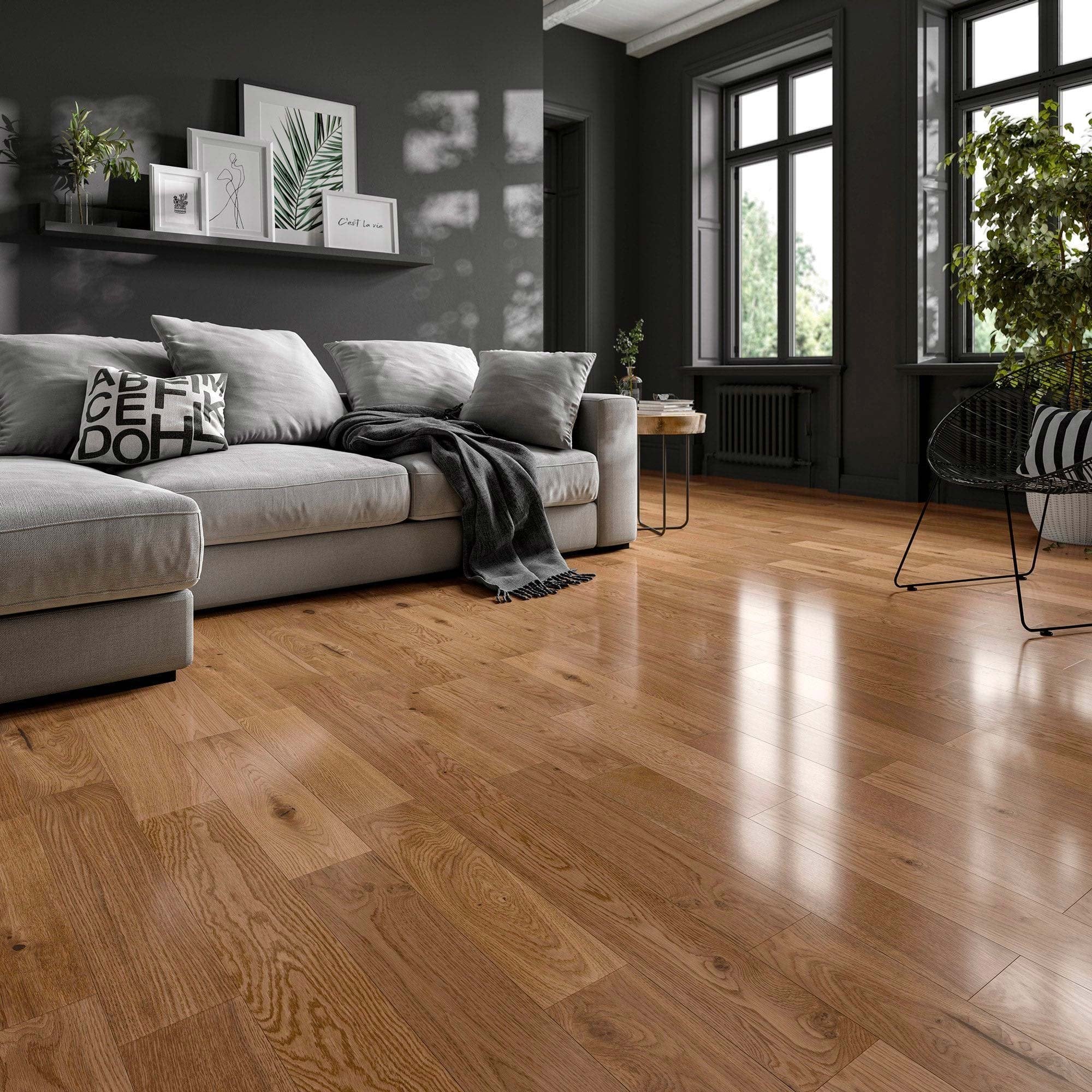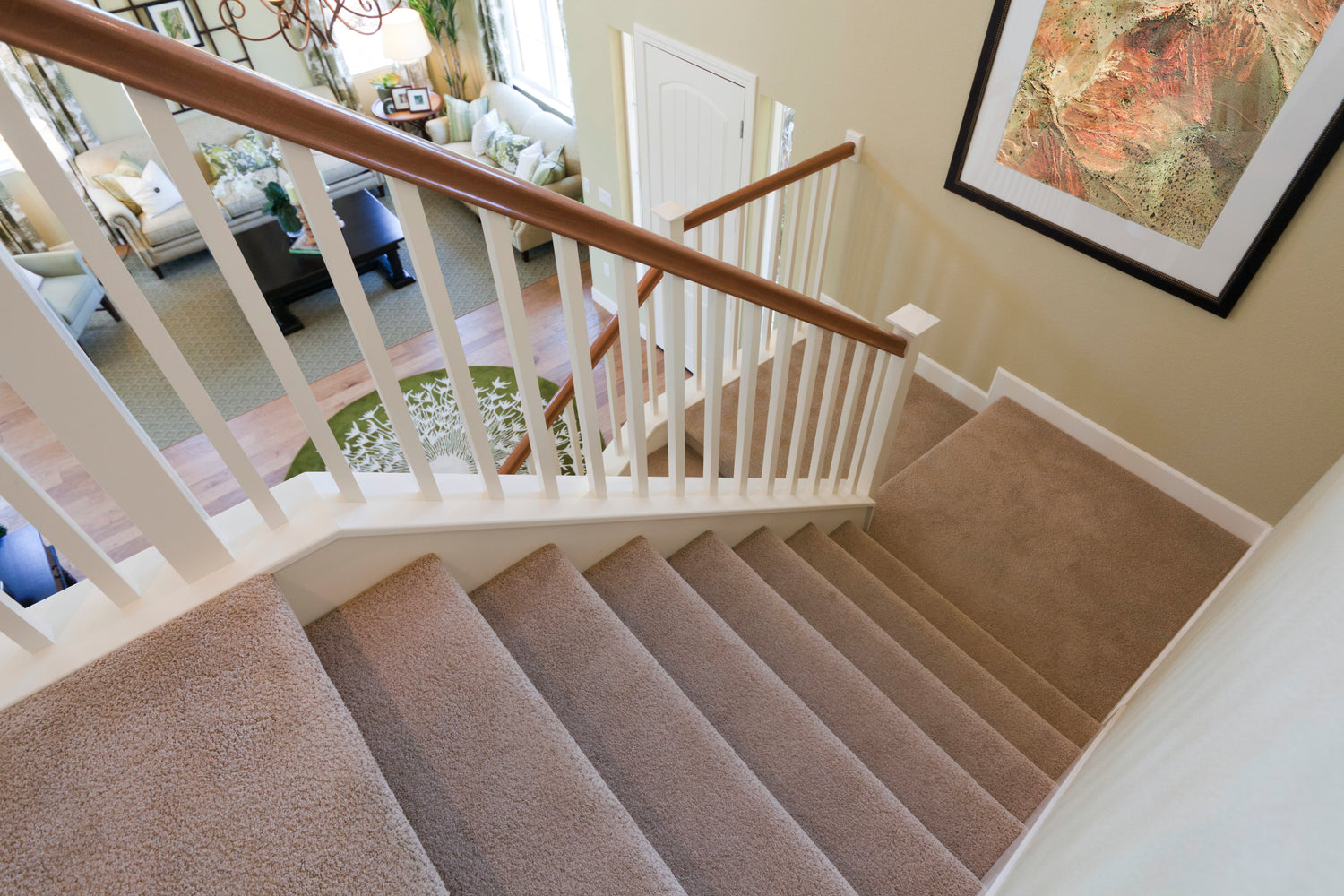
Help & Advice Centre

How to fit carpet underlay
Laying underlay is an essential part of fitting a carpet. It not only helps your carpet to feel more comfortable underfoot but can prevent your carpet from wearing too quickly and even keep the heat in your home, saving you a costly energy bill!
Here at Leader Online, we have a range of underlay designed for varying purposes, a range of thicknesses and underlay that can accommodate specific features such as underfloor heating and sound reduction. You will also find underlay within the range that is fit for purpose under the following flooring:
- Underlay for carpets
- Underlay for laminate flooring
- Underlay for real wood flooring
- Underlay for vinyl flooring
If you’re not sure where to get started - never fear. Here’s our quick guide to using underlay in your home.
-
Step 1
Clean the subfloor area
Firstly, you’ll need to sweep and vacuum your floors to ensure that they’re completely clear of dust and debris before you begin - you don’t want lumps when you’re finished! Having dirt and loose debris beneath your underlay can cause the flooring not to be level or damage the flooring once it is laid. If the room was previously carpeted, do a double-check for any nails or staples that could be lying around and remove them.
-
Step 2
Remove any doors
This can be an inconvenience to do, but we promise that it will make fitting the flooring and underlay easier in the long run. Removing doors from the room you are working in will ensure that you don’t have to manoeuvre around any tricky or hard to reach areas.
-
Step 3
Laying underlay on wooden floorboards?
Are you fitting the underlay on wooden floorboards? Make sure you also have an interliner - this will help to prevent problems such as drafts and stains from occurring. Having this protective layer will benefit you if a spillage occurs as if water manages to penetrate through to the wooden floorboards. You may find that this will damage the integrity and strength of the flooring.
-
Step 4
Lay down the overlay
Once the floor has been prepped, lay out your strips of underlay - they should overlap any carpet grippers you have but shouldn’t overlap each other. Making sure that you have full coverage is important and you should always lay out your underlay in the opposite direction to the floorboard.
Top Tip - if you are using foam underlay, make sure that this is with the backing facing upwards and the coloured film face-down to the floor.
-
Step 5
Staple the edges
Staple the underlay along the edges of the floor but inside the carpet gripper. Be careful not to leave any gaps between the underlay pieces, so it lies smooth underneath the carpet.
Top Tip - if you’re laying the underlay on a concrete floor, you may need to hold it in place with an adhesive (we recommend a spray adhesive).
-
Step 6
Tape and trim the underlay
Tape along the joins between each underlay strip to make sure they don’t show underneath the carpet. Trim off any edges that appear just inside the carpet gripper. Then you can sit back and admire your handiwork – you are ready to fit the carpet!
Frequently Asked Questions
Which way do you lay underlay?
When laying your underlay on floorboards, you should ensure that you position them in the opposite direction to the floorboards. Foam underlay should be placed with the backing facing upwards with the coloured film face down. Rubber underlay should be placed face down so that the backing is facing up and the coloured film is on the floor. When placing the underlay on the floor, pull it tight and ensure that there are no ridges.
Do you need to staple down underlay?
To ensure that the underlay is secure and stays in place, you should staple down the underlay or use an adhesive to glue it down into place. This will ensure that your flooring is level and doesn’t move when it is walked across, or furniture is placed into the room. Underlay will also protect the subfloor from any leaks or spillages that occur in the room.
Can you put 2 layers of underlay under carpet?
You may think that adding more layers of underlay to your flooring will protect your carpet, but in reality, they might not be. Having 2 layers of underlay can harm your carpet’s lifespan as it will bend from being raised and trodden from traffic if there is too much cushion. The carpet will also struggle to get onto grippers and would become unstable over time.
Can duct tape be used for underlayment?
Yes and no. Sorry to be that person, but we will divulge further, don’t worry! Underlayment tapes are used during the laying of underlay and have many advantages for the fitting process, including how readily available it is and how cheap it is. Duct tape can be used when fitting underlay under the carpet. It is recommended, however, to use specialised tape for real wood flooring and vinyl flooring.
Can you put new underlay over old underlay?
With time and wear, underlay will become compressed. We recommend using new underlay each time you change your flooring. Adding new underlay on top of the old underlay will impact the performance of the new underlay and can be harmful to your new flooring.
Old underlay can also be deceiving and look in good condition, and it can be tempting to keep in place, but often this will be an area with no footfall. Underlay can also hold lots of dirt and dust over time, so it is wise to replace it each time you change your flooring.
Does underlay go over grippers?
- Grippers need to be fitted around the edge of the room prior to underlay or floor lining paper. You can then lay the underlay but make sure that there is no overlap onto the grippers as this will cause trouble when you come to fit the carpet or flooring.
Can you put carpet down without underlay?
Underlay has many benefits, including reducing noise pollution, insulating heat and comfort underfoot. Underlay also prolongs the life of your carpet and reduce the friction from the subfloor. If your carpet is felt-backed, underlay is not necessary, but it is beneficial to have for the health of the carpet. If your carpet is hessian backed, then you will need underlay a there will be no cushioning at all and you may as well be walking on the floorboards.
Does carpet underlay make a difference?
In short, yes. There are several benefits of having carpet underlay which include the following points.
Advantages of carpet underlay
- Prolongs the lifespan of the carpet
- Reduces noise
- Adds warmth to the property
- Plush underfoot
- Protects the subfloor
- Improves hygiene and cleanliness
- Cost-effective in the long run
Does underlay need an expansion gap?
Expansion gaps should be left around the perimeter of the floor around 10-12mm. As the temperature and humidity of a room change, the flooring will also change, and it is wise to cater to these changes to ensure that the flooring stays in the best condition possible. Leaving an expansion gap of around 12mm will ensure that you accommodate the flooring changes.
Can you lay laminate over carpet underlay?
You should not lay laminate flooring over carpet underlay. Carpet underlay is too thick to be used with laminate flooring. Having a supple underlay beneath your laminate flooring could mean that the interlocking system of the flooring breaks loose and could damage the flooring.
What is the thickest underlay you can buy?
Here at Leader Online, our thickest underlay is 3mm and is designed for use under laminate flooring. If you are struggling to figure out how much underlay you will need, we have a calculator with each underlay product that will tell you how many rolls you should buy inclusive of 5% wastage.





